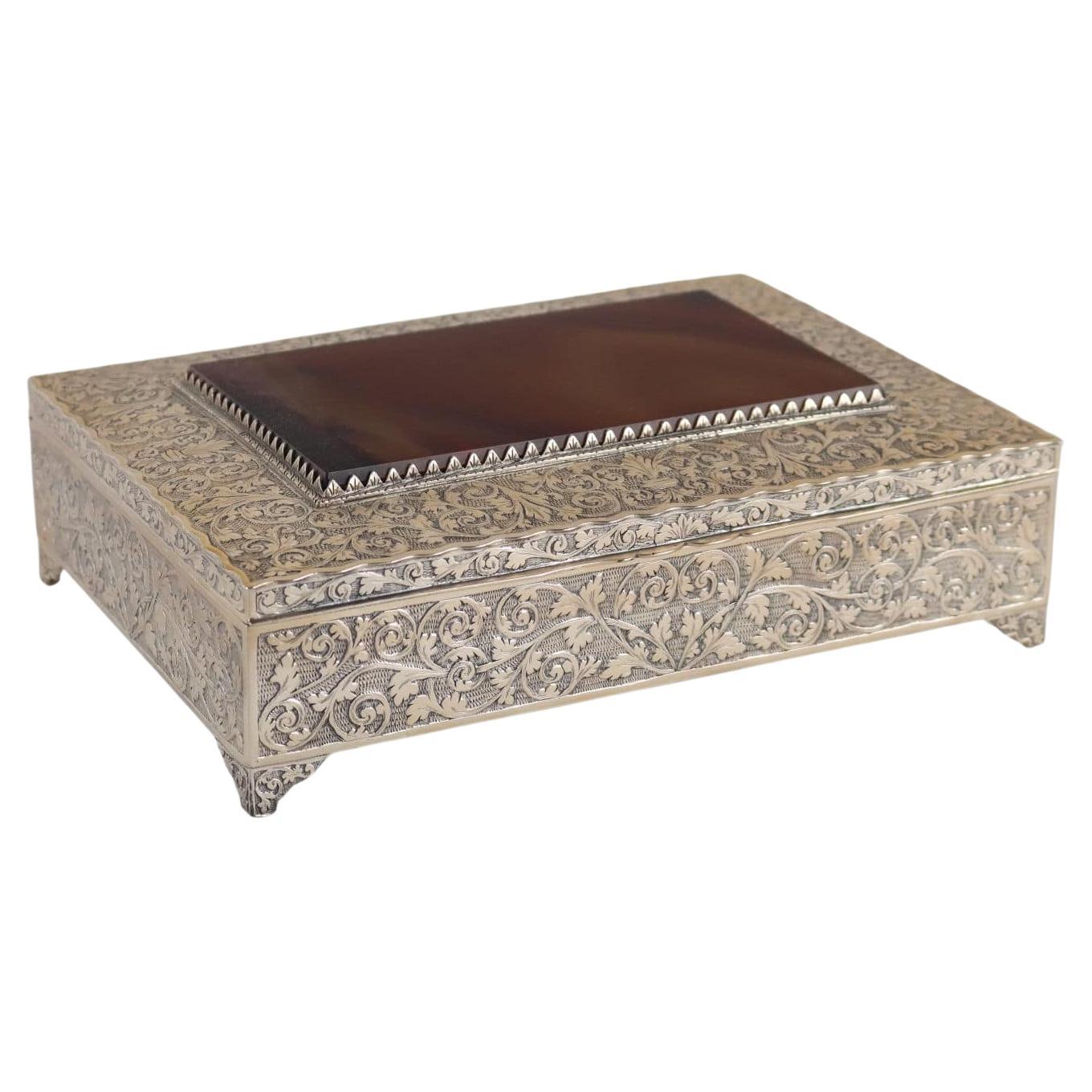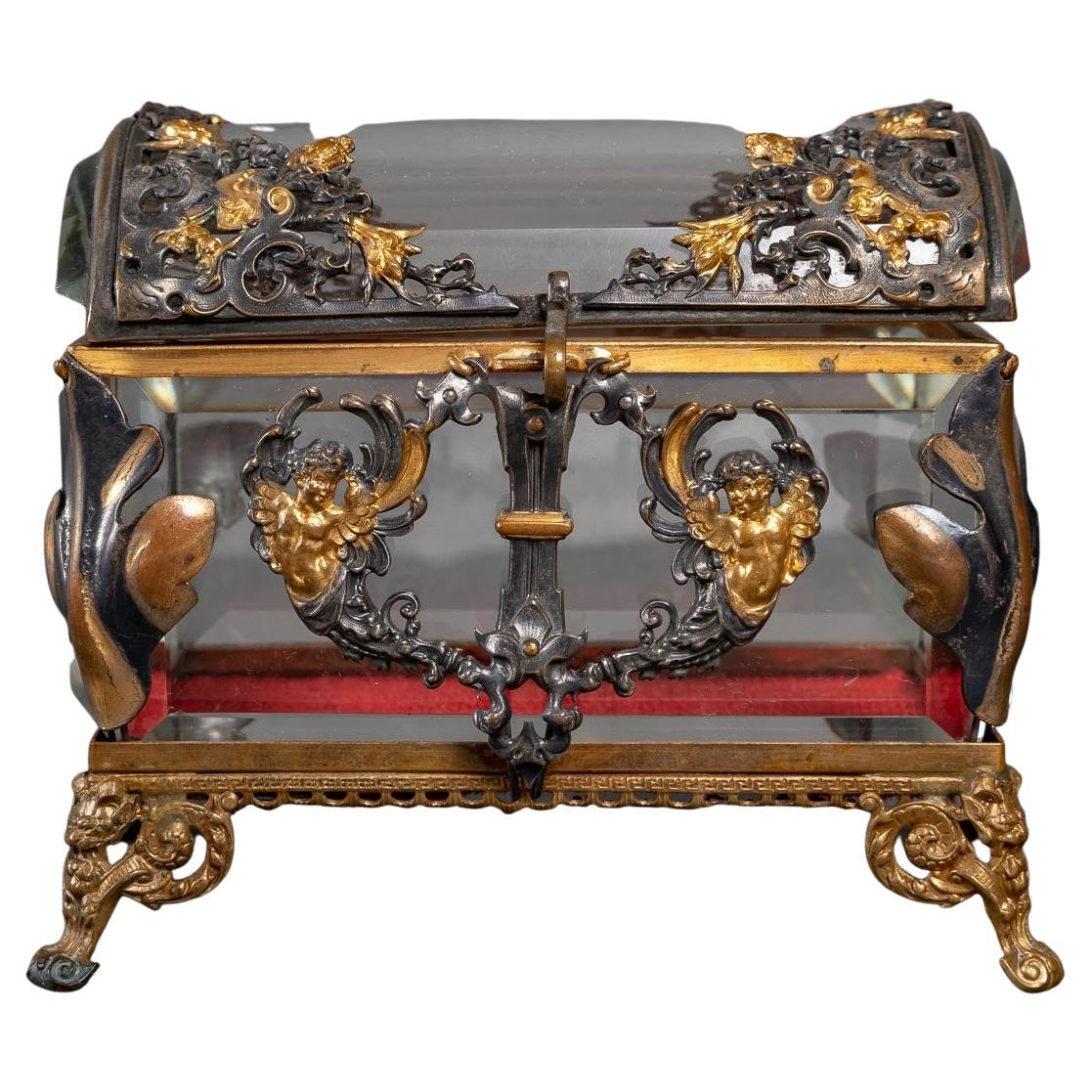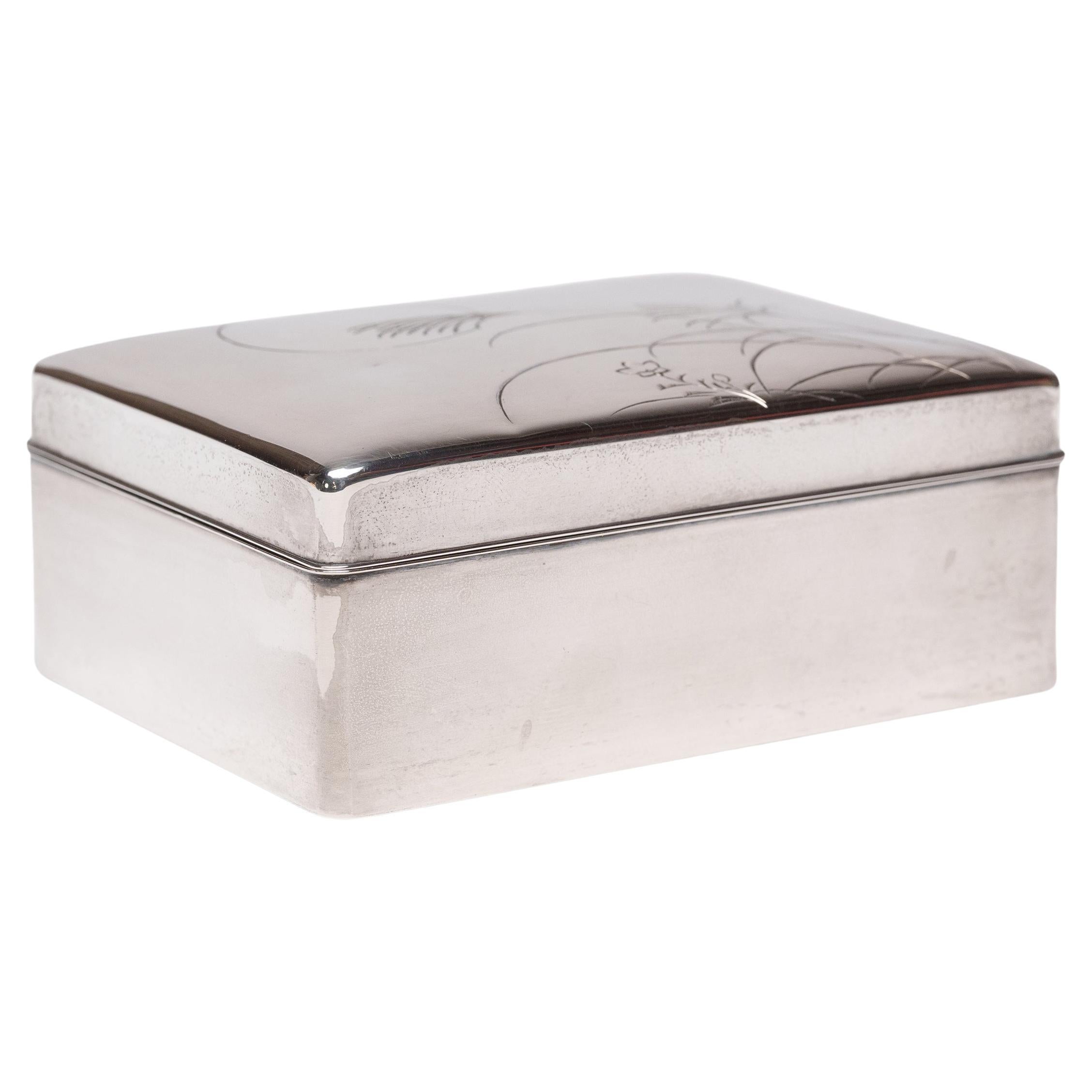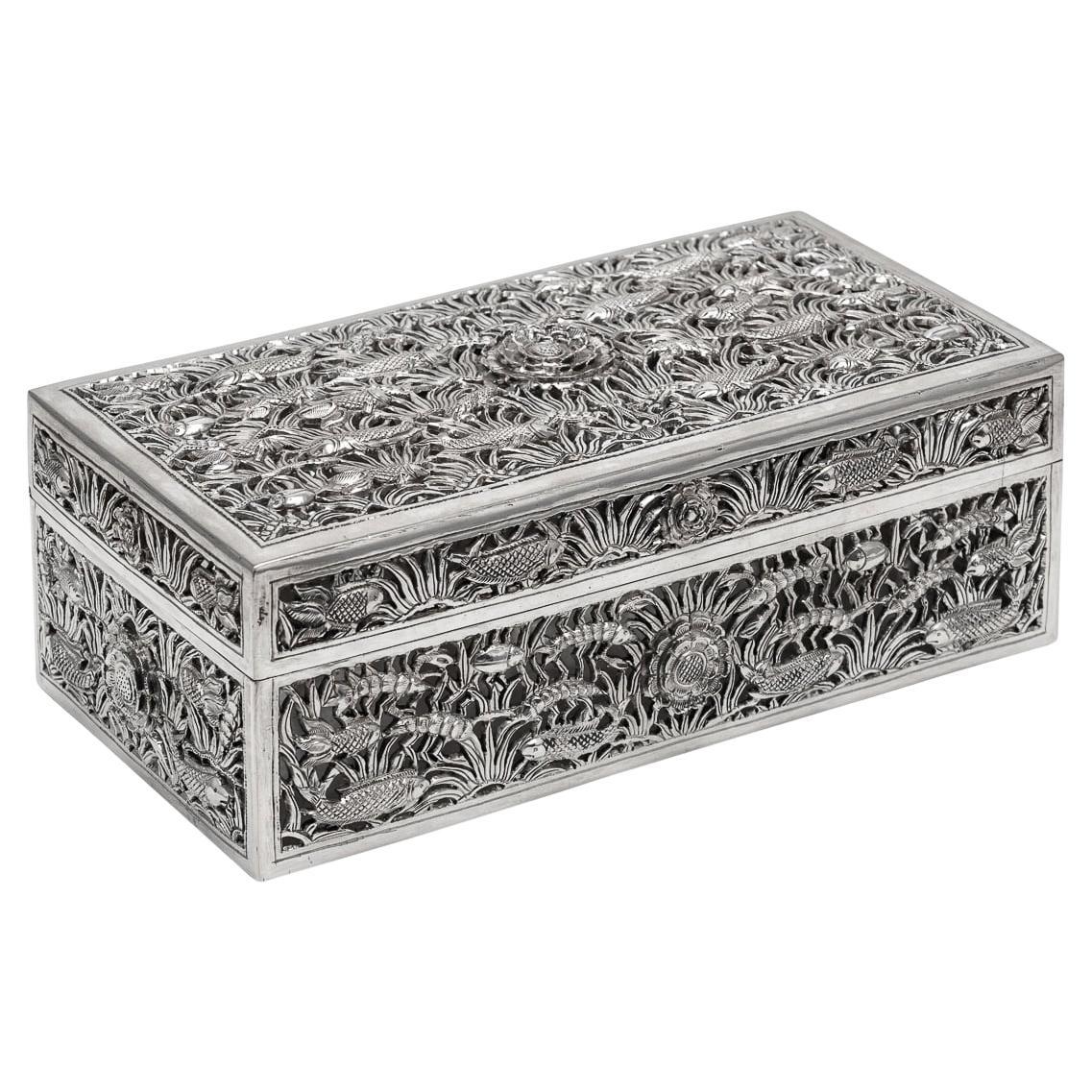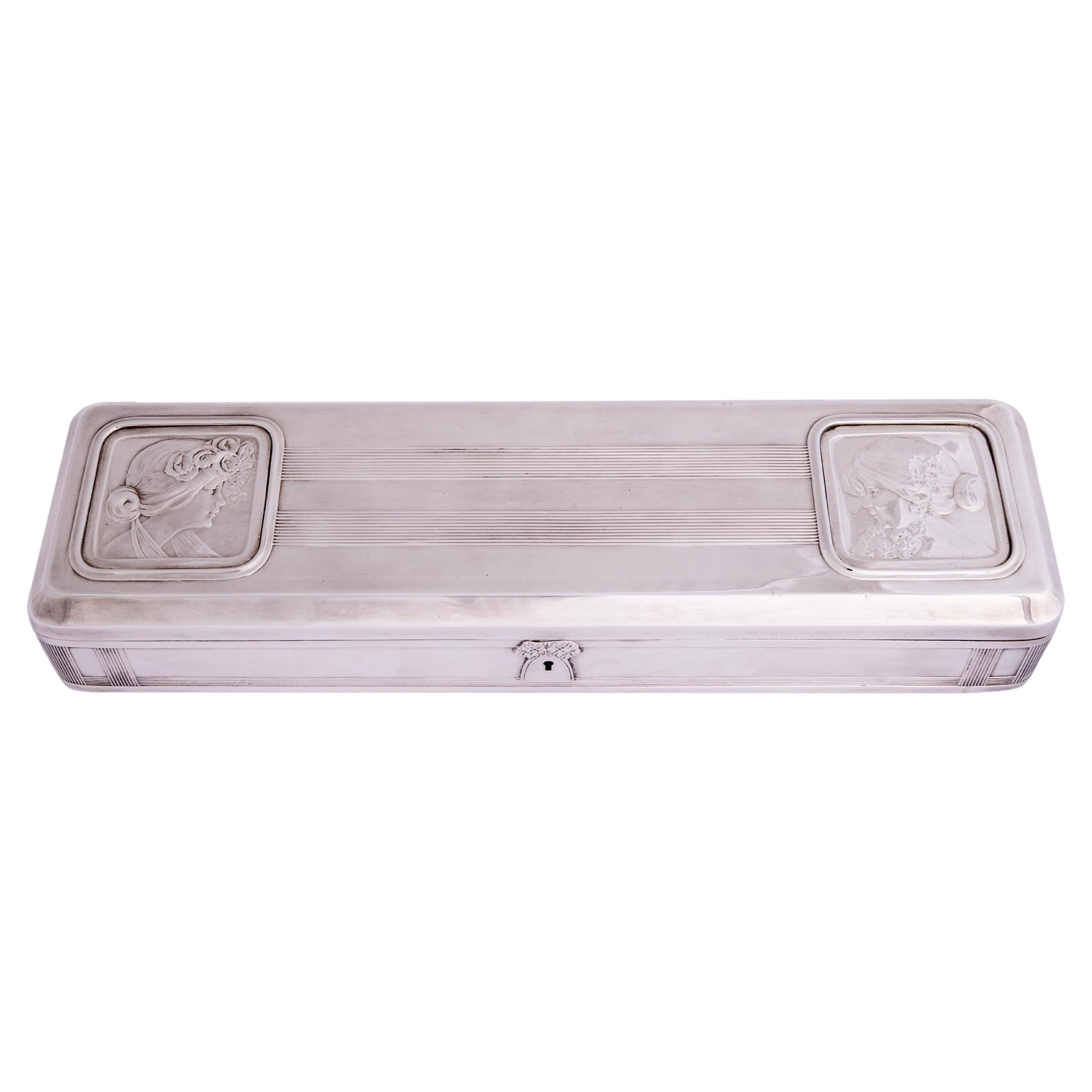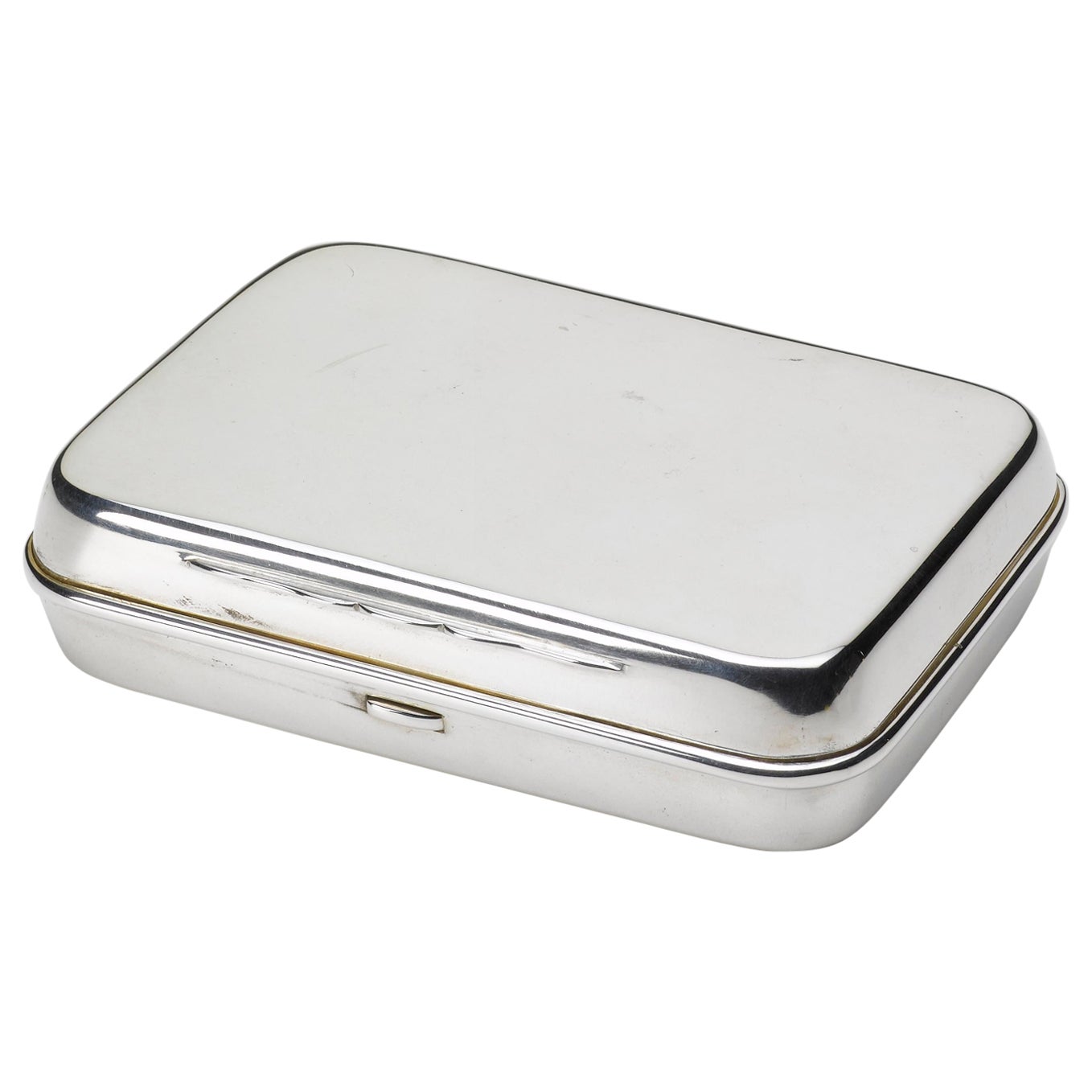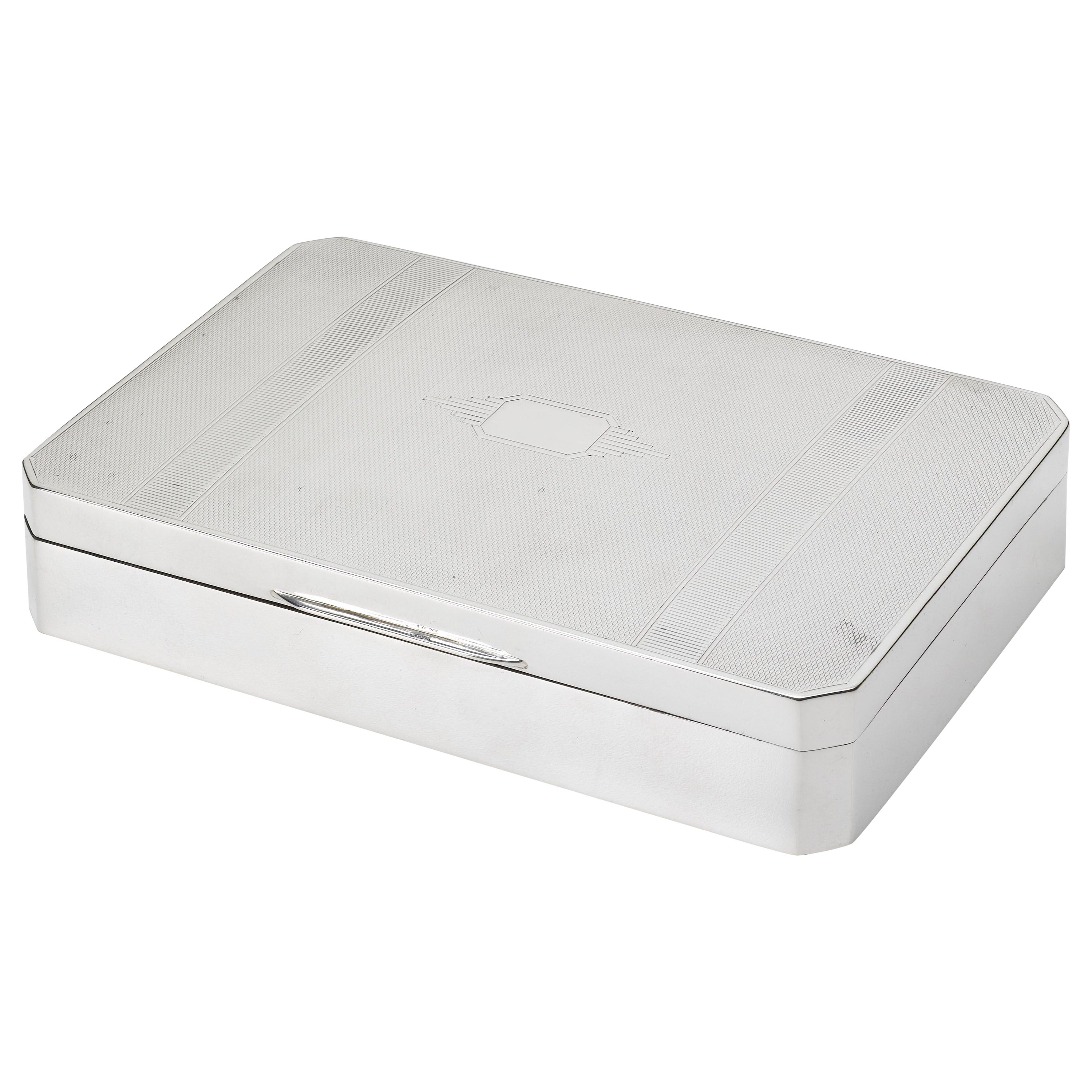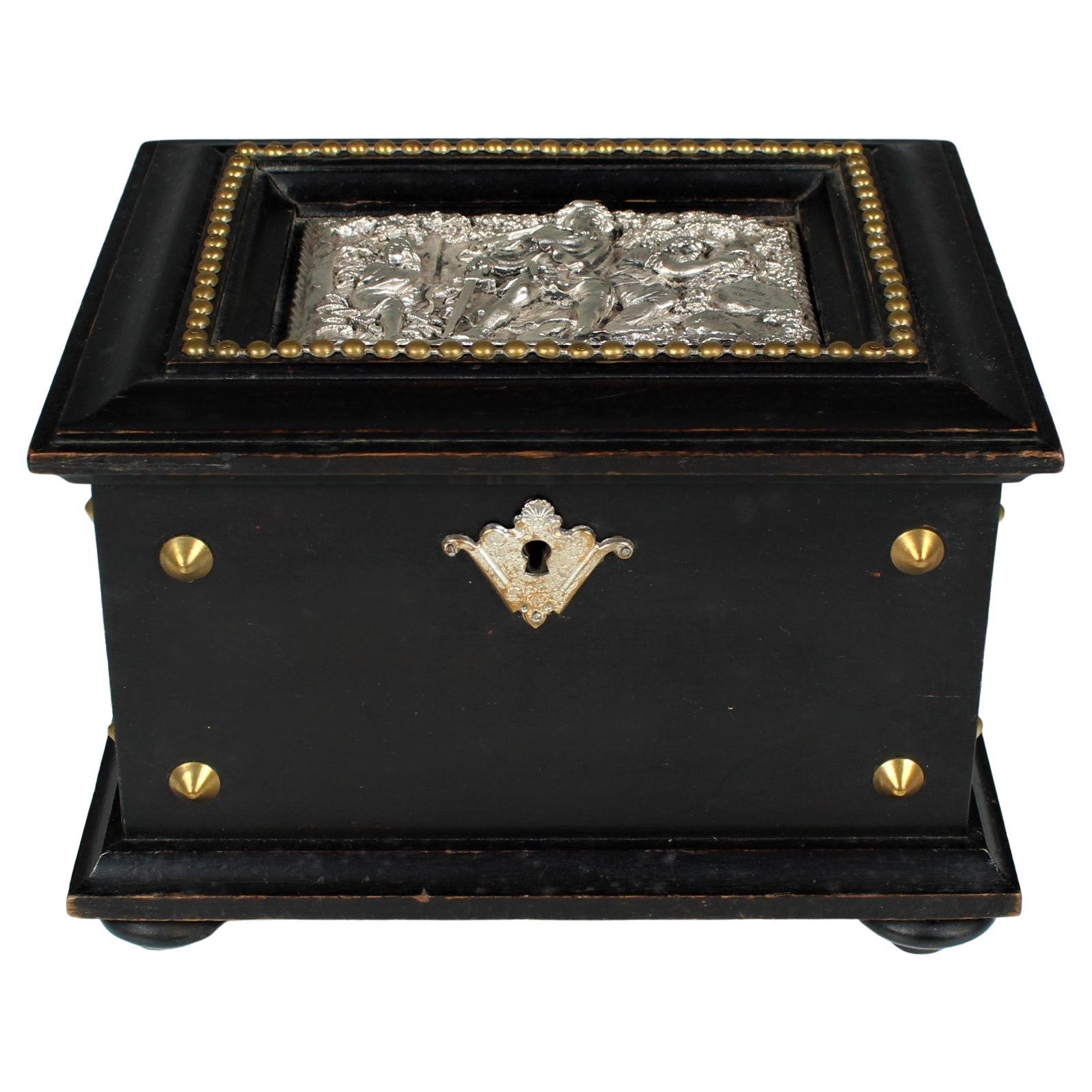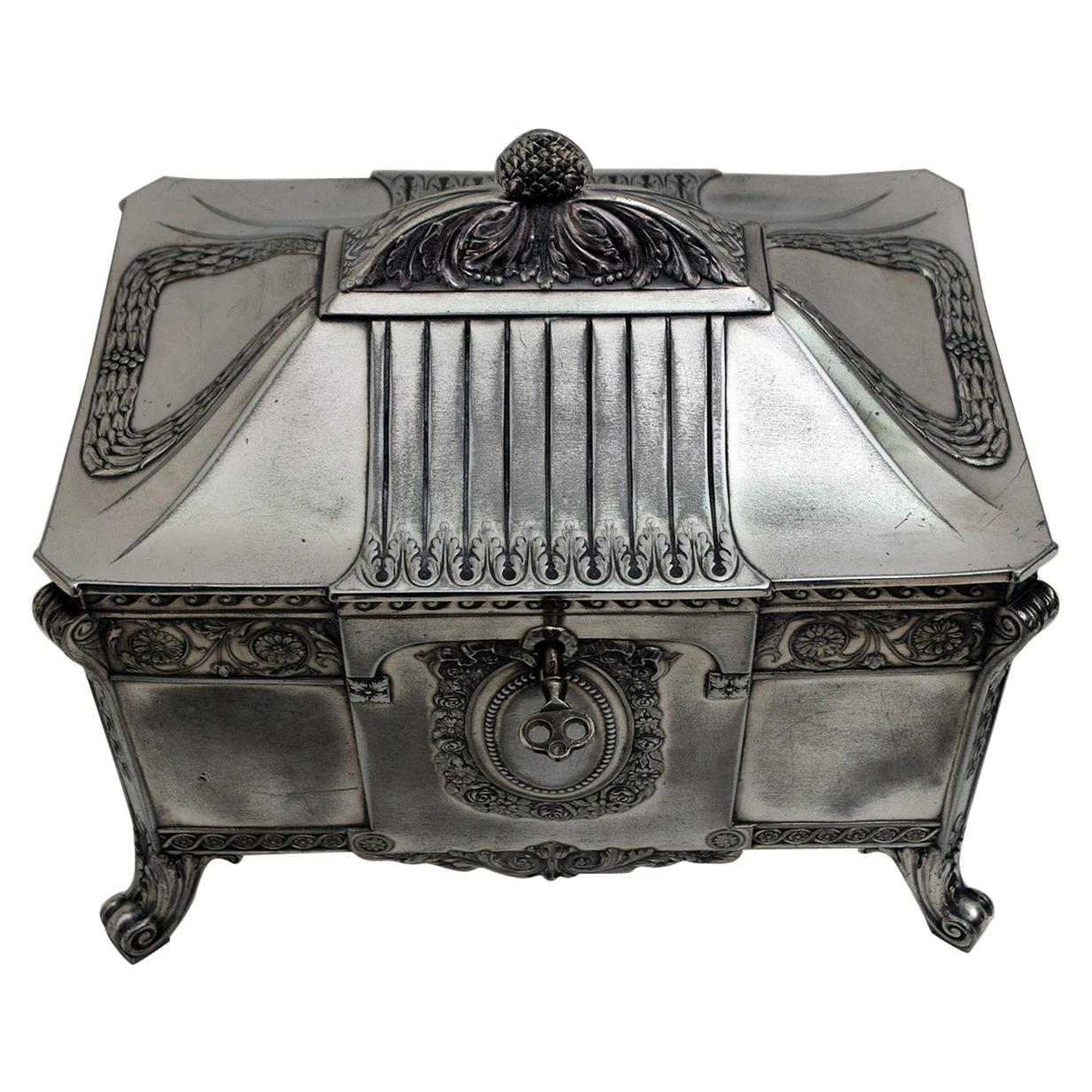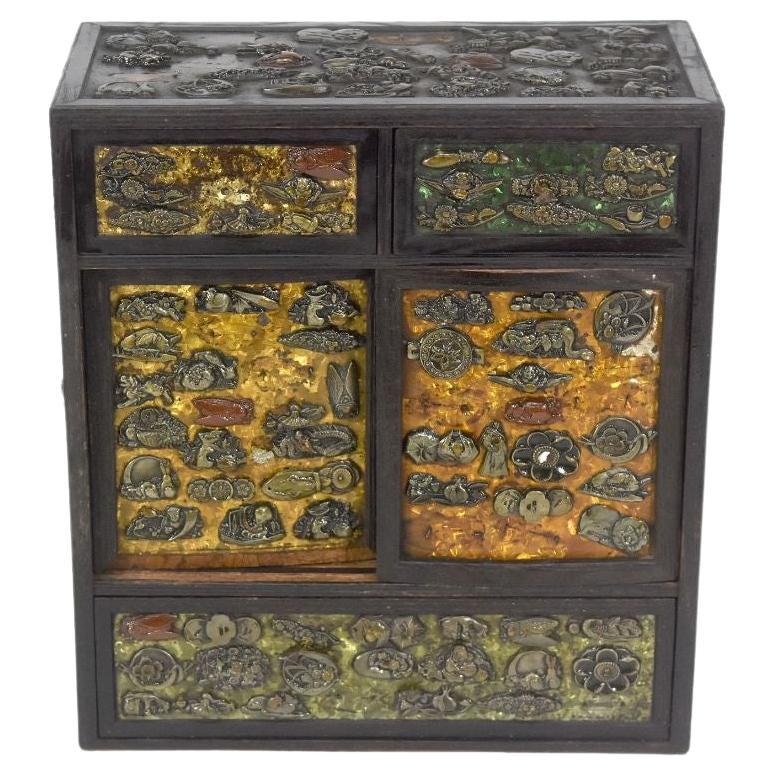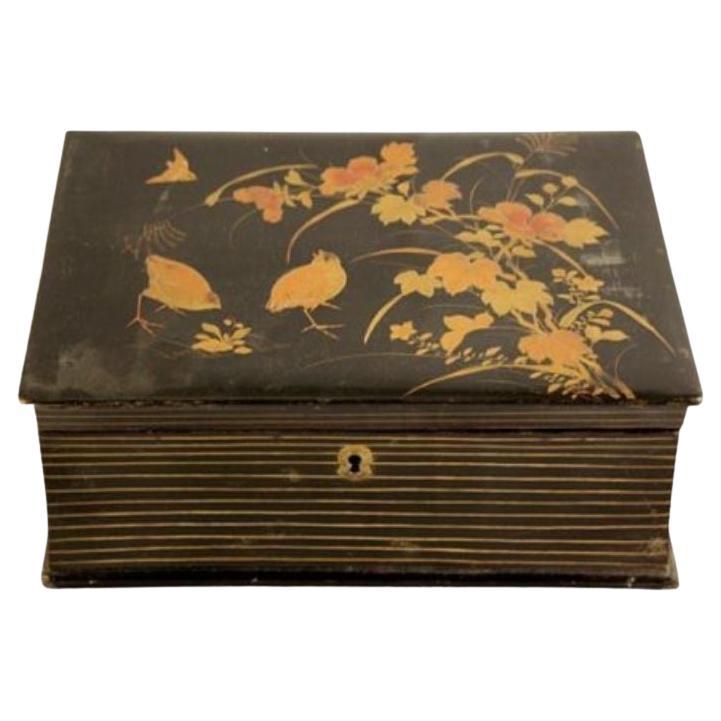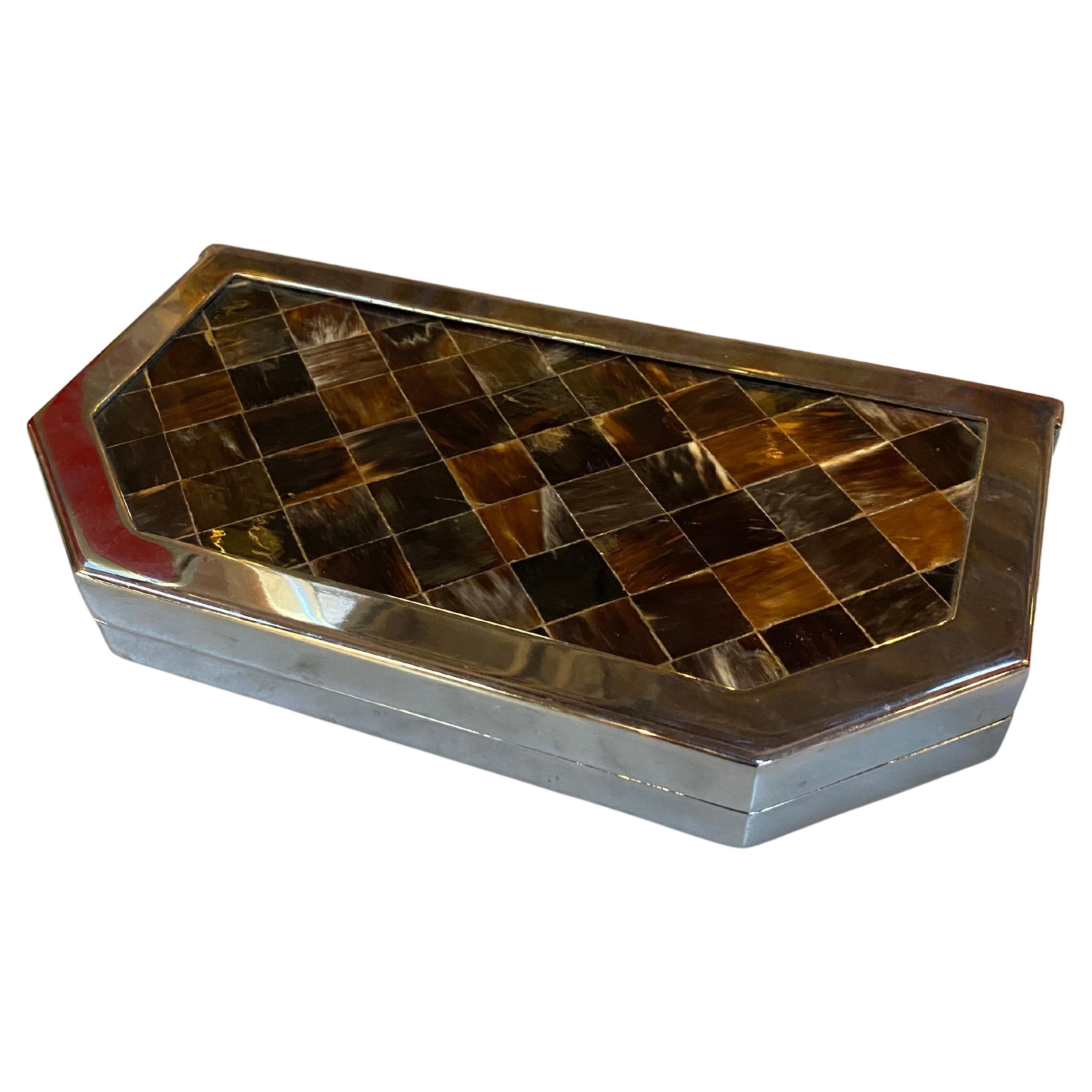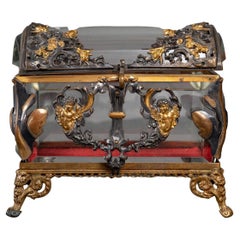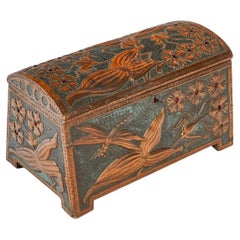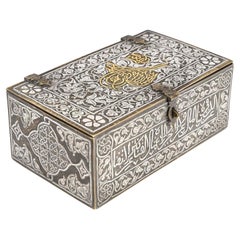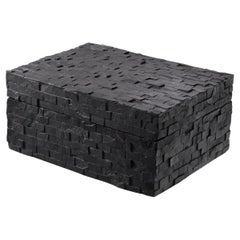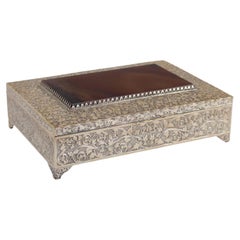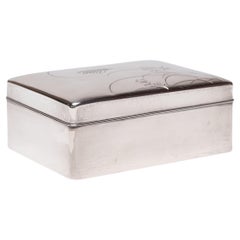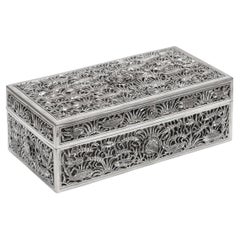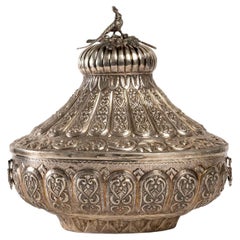
Beautiful Silver Box, 1900
View Similar Items
Want more images or videos?
Request additional images or videos from the seller
1 of 13
Beautiful Silver Box, 1900
About the Item
- Dimensions:Height: 11.82 in (30 cm)Width: 11.82 in (30 cm)Depth: 8.67 in (22 cm)
- Style:Egyptian (In the Style Of)
- Materials and Techniques:
- Place of Origin:
- Period:1900-1909
- Date of Manufacture:1900
- Condition:Wear consistent with age and use.
- Seller Location:Saint-Ouen, FR
- Reference Number:1stDibs: LU1530230169952
About the Seller
4.8
Platinum Seller
Premium sellers with a 4.7+ rating and 24-hour response times
Established in 2003
1stDibs seller since 2015
332 sales on 1stDibs
Typical response time: 1 hour
Authenticity Guarantee
In the unlikely event there’s an issue with an item’s authenticity, contact us within 1 year for a full refund. DetailsMoney-Back Guarantee
If your item is not as described, is damaged in transit, or does not arrive, contact us within 7 days for a full refund. Details24-Hour Cancellation
You have a 24-hour grace period in which to reconsider your purchase, with no questions asked.Vetted Professional Sellers
Our world-class sellers must adhere to strict standards for service and quality, maintaining the integrity of our listings.Price-Match Guarantee
If you find that a seller listed the same item for a lower price elsewhere, we’ll match it.Trusted Global Delivery
Our best-in-class carrier network provides specialized shipping options worldwide, including custom delivery.More From This Seller
View AllBeautiful Crystal Jewelry Box, Mounted in Silver and Gilded Bronze
Located in Saint-Ouen, FR
Beautiful crystal jewelry box, mounted in silver and gilded bronze.
Crystal jewelry box, mounted in gilt bronze and silver, Napoleon III period, 19th century.
Dimensions: H: 11...
Category
Antique 19th Century European Napoleon III Jewelry Boxes
Materials
Crystal, Bronze
Art Nouveau Repoussé Copper Box, circa 1900.
Located in Saint-Ouen, FR
Art Nouveau repoussé copper box, circa 1900.
Art Nouveau style box, 1900, embossed copper on a wooden interior, red glass cabochons, with key.
D...
Category
20th Century French Art Nouveau Decorative Boxes
Materials
Copper
Box, Brass and Silver Box, 19th Century Syrian Work, Orientalist Art.
Located in Saint-Ouen, FR
Box, brass and silver box, 19th century Syrian work, orientalist art.
Nineteenth century box, orientalist brass and silver, Syria.
H: 6,5cm, W: 1...
Category
Antique 19th Century Syrian Napoleon III Decorative Boxes
Materials
Silver, Brass
Box
Located in Saint-Ouen, FR
Box
Mango wood / black finish
Dimensions: length: 28,5 / width: 22 / height 13 cm.
Category
21st Century and Contemporary European Modern Jewelry Boxes
Materials
Wood
$1,256
Enamelled and Cloisonné Silver Box, Jade Inlay, China, 19th Century.
Located in Saint-Ouen, FR
Enamelled and cloisonné silver box, jade inlay, China, 19th century.
Enamelled and cloisonné silver box, jade inlay, China, 19th century.
H: 6cm, W: 11cm, D: 7cm
Category
Antique 19th Century Chinese Chinoiserie Decorative Boxes
Materials
Silver
Important Box, Sèvres Porcelain Box, Napoleon III Period
Located in Saint-Ouen, FR
Important box, Sèvres porcelain box, Napoleon III period.
Sèvres porcelain box, jewelry box, decorated with gallant scenes, signed, gilded brass mount, very nice quality, 19th cen...
Category
Antique 19th Century French Napoleon III Decorative Boxes
Materials
Brass
You May Also Like
Silver Box Italy First Half of 1900s
By Non-Standard Furniture and Lighting
Located in Milano, IT
Embossed and engraved silver box with leaf volutes held up by four feet. On the blunt-edged lid agate-like glass plaque setting. Silver mark cast under base. 1085 grams.
Category
Vintage 1950s Italian Mid-Century Modern Jewelry Boxes
Materials
Silver
$1,306 Sale Price
20% Off
Japanese Silver Trinket Box with Full Moon & Grass, c. 1900
Located in Chicago, IL
This Meiji-period trinket box exemplifies Japanese refinement in all crafts. Fashioned of silver with a hardwood interior, the small box has a clean-lined rectangular form with rounded corners and a thin lip where the lid meets the base. The lid is etched with tall grasses swaying before a full moon, a motif that represents the Japanese moon...
Category
Antique Late 19th Century Japanese Minimalist Decorative Boxes
Materials
Silver
Antique 20th Century Cambodian Solid Silver Box c.1900
Located in Royal Tunbridge Wells, Kent
Antique 20th Century South Asian (Cambodian) solid silver box. Decorated throughout with fish, frogs and aquatic flowers in a detailed, pierced design. Stamped to the base with a T.9...
Category
20th Century Cambodian Other Decorative Boxes
Materials
Silver
Large Art Nouveau silver jewelry box France 1900-1910
Located in Salzburg, AT
Large Art Nouveau silver jewelry box France 1900-1910
This gem of a jewelry box from France is not only heavy but is also extremely decorative due to its elongated shape.
The basic decoration consists of closely placed grooves that recur both front and back, as well as on the side and on the lid. Furthermore, the lid has 2 square fields in which 2 girls' heads are stamped.
Both wear a floral hair...
Category
Antique Early 1900s French Art Nouveau Decorative Boxes
Materials
Silver
Hallmarked Silver Plated Keepsake Box, Sheffield, Uk, Circa 1900
Located in Colorado Springs, CO
Offered is a stunning Sheffield silver keepsake box dating to 1900, with associated hallmark. This small box includes a clean interior and rounded corners. The box is free of names or initials, but would have been used to house keepsakes such as jewelry or cufflinks. A well maintained, elegant piece, this antique silver box is an excellent addition to any silver collection.
Trinket or keepsake boxes have taken on many forms since their first conception in ancient times. However their purpose remains the same; to store jewelry and other items precious to the owner. Originally, these boxes were used specifically for jewelry. These were in common use as early as 5000 BC in Ancient Egypt, when the majority of Egyptians, both male and female, wore jewelry. Boxes were used to keep these gemstone encrusted items safe. In Ancient Rome, jewelry was a status symbol. Rings and brooches were utilized to represent ones status in society. Again, boxes were needed for security and storage purposes. Finding early examples of these are quite rare.
Victorian and Edwardian examples of trinket boxes are far more common. This is because owning jewellery was a luxury until the Victorian era- let alone possessing so much a box was needed to store it all. Fine jewelry and other items became available to the masses after the industrial revolution due to the reduction in production costs. This led to a demand for trinket boxes, which were much smaller than jewelry boxes and therefore better suited to the needs of the middle class who did not yet possess an abundance of jewelry.
In Victorian households, collectables and other items of interested were also stashed inside these boxes. This is why they are known as trinket or keepsake boxes, rather than just jewelry boxes, although of course jewelry was also stored in them. Trinket boxes were produced in large numbers around this time. Many were lined with colored plush or velvet or rich wood. More elaborate designs had interior divisions and trays for rings and other pieces of jewellery. It was also common to see trinket boxes so small that they could only contain one item, such as a single ring. Ornate exteriors were created to reflect the value of the trinket boxes contents.
The Edwardian era saw the introduction of new styles of trinket box. These included small circular or oblong boxes...
Category
Antique Early 1900s British Art Deco Decorative Boxes
Materials
Silver
Hallmarked Silver Plated Keepsake Box, Sheffield, UK, circa 1900
Located in Colorado Springs, CO
Offered is a stunning silver plated keepsake box dating to 1900, with associated hallmark. This small box includes a wooden interior with two slots and a blank square on top where initials could have been engraved. A well maintained, elegant piece, this antique silver box is an excellent addition to any silver or home decor collection.
Trinket or keepsake boxes have taken on many forms since their first conception in ancient times. However their purpose remains the same; to store jewelry and other items precious to the owner. Originally, these boxes were used specifically for jewelry. These were in common use as early as 5000 BC in Ancient Egypt, when the majority of Egyptians, both male and female, wore jewelry. Boxes were used to keep these gemstone encrusted items safe. In Ancient Rome, jewelry was a status symbol. Rings and brooches were utilized to represent ones status in society. Again, boxes were needed for security and storage purposes. Finding early examples of these are quite rare.
Victorian and Edwardian examples of trinket boxes are far more common. This is because owning jewellery was a luxury until the Victorian era- let alone possessing so much a box was needed to store it all. Fine jewelry and other items became available to the masses after the industrial revolution due to the reduction in production costs. This led to a demand for trinket boxes, which were much smaller than jewelry boxes and therefore better suited to the needs of the middle class who did not yet possess an abundance of jewelry.
In Victorian households, collectables and other items of interested were also stashed inside these boxes. This is why they are known as trinket or keepsake boxes, rather than just jewelry boxes, although of course jewelry was also stored in them. Trinket boxes were produced in large numbers around this time. Many were lined with colored plush or velvet or rich wood. More elaborate designs had interior divisions and trays for rings and other pieces of jewellery. It was also common to see trinket boxes so small that they could only contain one item, such as a single ring. Ornate exteriors were created to reflect the value of the trinket boxes contents.
The Edwardian era saw the introduction of new styles of trinket box. These included small circular or oblong boxes...
Category
Antique Early 1900s English Art Deco Decorative Boxes
Materials
Silver
$600 Sale Price
20% Off
